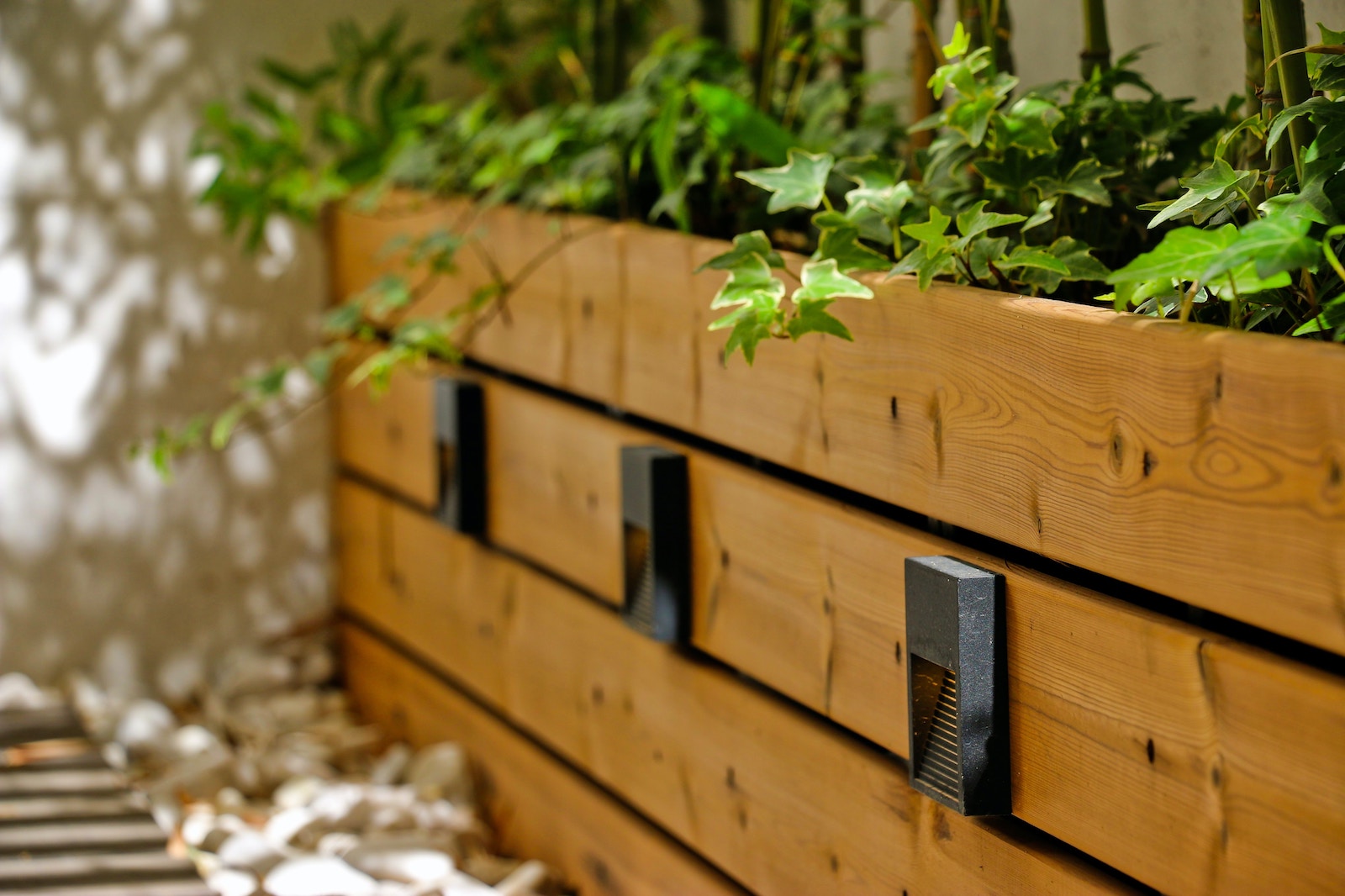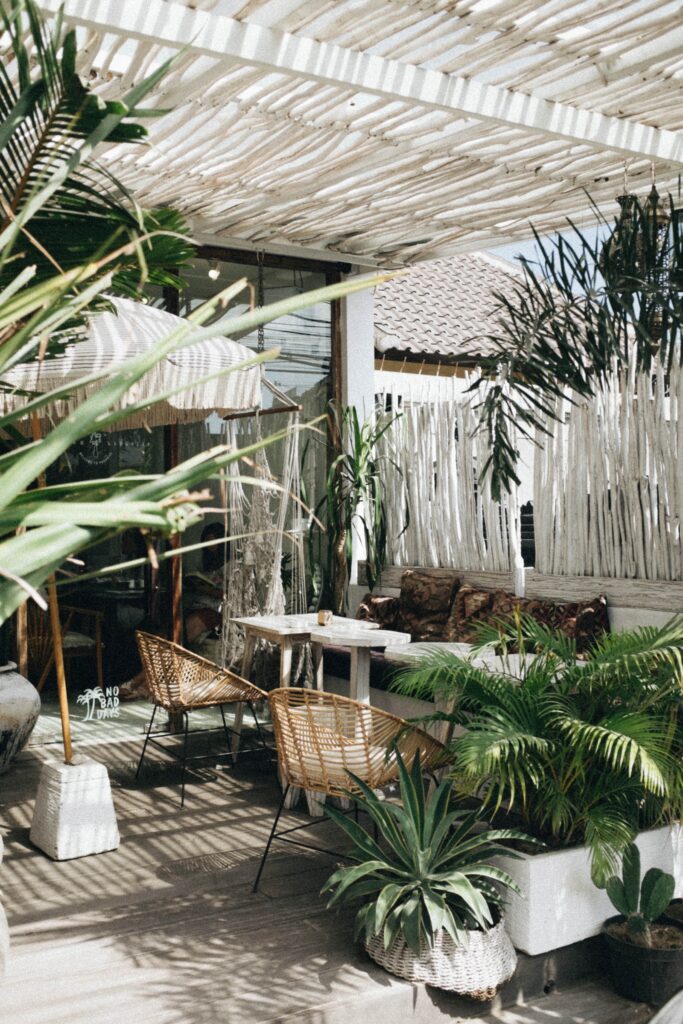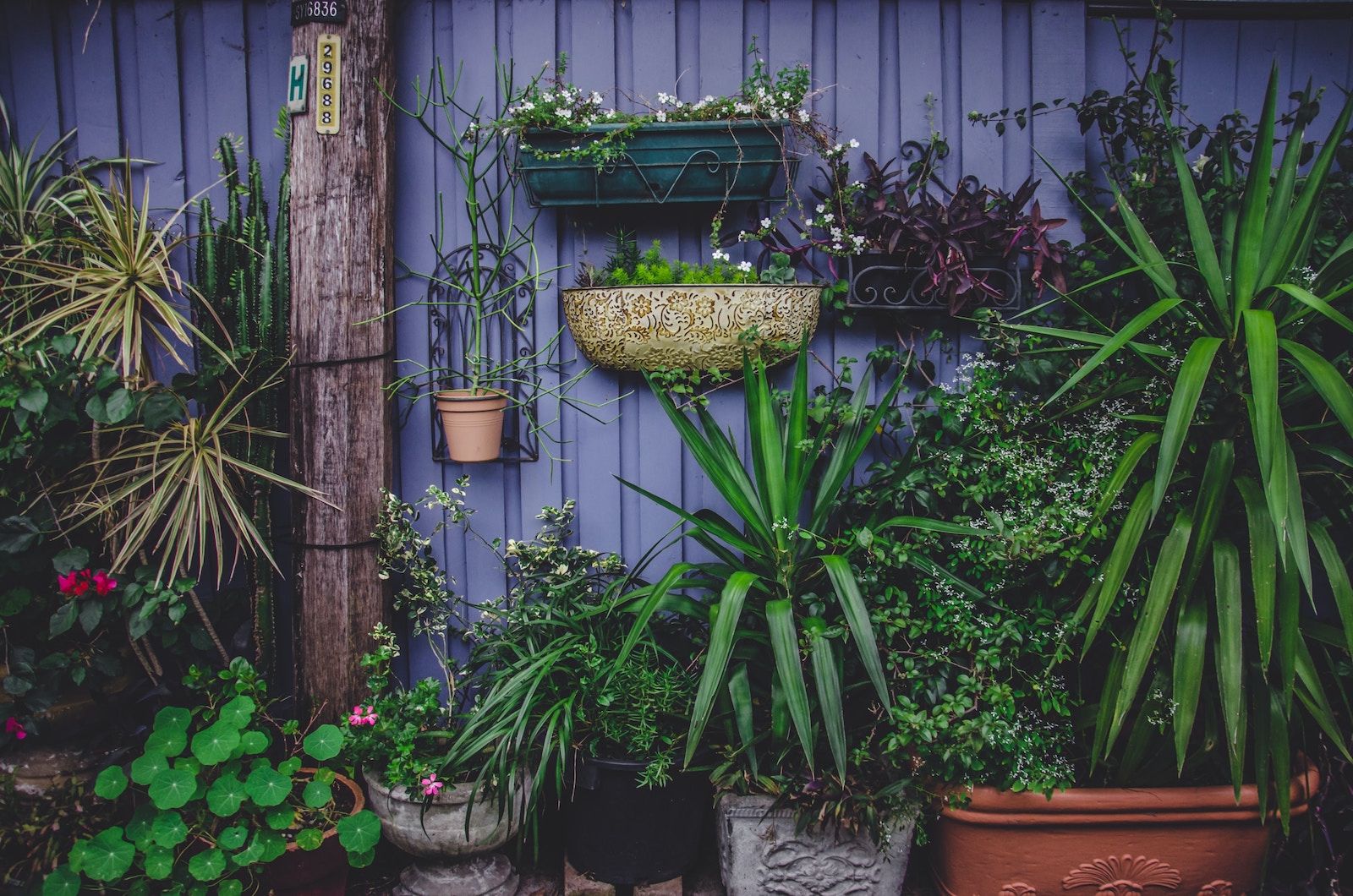
Small space garden design is becoming increasingly popular as more people are living in cities or in smaller homes. With limited outdoor space, it can be challenging to create a garden that is both functional and beautiful. However, with the right design and planning, even the smallest of spaces can be transformed into a lush and inviting garden.
One of the keys to successful small space garden design is maximizing the use of vertical space. This can be achieved through the use of hanging baskets, trellises, or vertical planters. Another important factor is selecting the right plants for the space. It’s important to choose plants that are well-suited to the amount of light and space available, as well as plants that are low-maintenance and easy to care for.
When it comes to small space garden design, there are endless possibilities. Whether you have a tiny balcony, a small patio, or even just a windowsill, there are plenty of creative ways to incorporate greenery into your space. With a little creativity and some careful planning, you can create a beautiful and functional garden that will bring joy and tranquility to your home.
Understanding Small Space Garden Design
Small space garden design is the art of creating beautiful and functional gardens in limited spaces. Whether you have a small balcony, patio, or backyard, you can create a garden that suits your style and needs. In this section, we will explore some small garden ideas and garden design principles that will help you make the most of your limited space.
Garden Design Principles
When designing a small garden, it is important to keep a few principles in mind. First, consider the size and shape of your space. Is it long and narrow or square? This will affect the layout and design of your garden. Second, think about the style of garden you want. Do you prefer a modern, minimalist look or a more traditional, cottage garden style? This will influence the plants, colors, and materials you choose.
One of the most important principles of small space garden design is vertical gardening. This involves using walls, fences, and trellises to create vertical growing spaces. Vertical gardens are perfect for small gardens because they take up very little floor space but provide plenty of room for plants to grow.
Small Garden Ideas
There are many small garden ideas that can help you make the most of your limited space. Here are some tips to get you started:
- Use containers: Container gardening is perfect for small spaces because it allows you to grow plants in a small area. You can use pots, baskets, or even old tires to create a container garden.
- Create a focal point: A focal point, such as a sculpture or water feature, can draw the eye and make a small garden feel larger.
- Use color: Bright colors can make a small garden feel more vibrant and lively. Consider using colorful pots, flowers, and accessories to add pops of color to your garden.
- Incorporate lighting: Outdoor lighting can make a small garden feel more inviting and cozy. Use string lights, lanterns, or other outdoor lighting to create a warm and welcoming atmosphere.
- Choose the right plants: When choosing plants for a small garden, it is important to consider their size and growth habits. Choose plants that are compact and slow-growing, or that can be trained to grow vertically.
Long Garden Ideas
If you have a long, narrow garden, there are a few design principles that can help you make the most of your space. First, consider dividing the garden into different zones, such as a seating area, a vegetable garden, and a flower garden. This will create visual interest and make the garden feel larger.
Another long garden idea is to create a path or walkway that meanders through the garden. This will create a sense of exploration and make the garden feel more inviting. Finally, consider using vertical gardening techniques, such as trellises and climbing plants, to create height and depth in the garden.
In conclusion, small space garden design is all about making the most of your limited space. By using vertical gardening techniques, choosing the right plants, and incorporating design principles such as color and lighting, you can create a beautiful and functional garden in even the smallest of spaces.
Choosing the Right Plants and Flowers
When it comes to small space garden design, choosing the right plants and flowers is crucial. You want to make sure that you select plants that not only fit within your space but also thrive in the conditions you have available. Here are some tips to help you choose the right plants and flowers for your small space garden.
Herbs and Vegetables
Growing herbs and vegetables in your small space garden is a great way to create a functional and beautiful space. When selecting herbs and vegetables, consider the amount of sunlight your garden receives and the space you have available. Some great options for small space gardens include beans, tomatoes, and herbs like basil and mint.
Flowers and Greenery
Flowers and greenery are essential for adding color and life to your small space garden. When choosing flowers, consider the amount of sunlight your garden receives and the climate you live in. Popular options for small space gardens include roses, succulents, and hydrangeas. For greenery, consider using plants like phlox and bushes to add texture and depth to your garden.
Large Plants and Trees
While large plants and trees may seem like they take up too much space in a small garden, they can actually be used to create a focal point and add interest to your space. When selecting large plants and trees, consider the amount of sunlight your garden receives and the space you have available. Some great options for small space gardens include dwarf fruit trees and small ornamental trees like Japanese maples.
In summary, choosing the right plants and flowers for your small space garden is crucial for creating a functional and beautiful space. Consider the amount of sunlight your garden receives, the climate you live in, and the space you have available when selecting plants and flowers. With the right choices, you can create a stunning small space garden that will bring you joy for years to come.
Maximizing Your Outdoor Space
When it comes to small space garden design, every inch counts. Here are some tips for maximizing your outdoor space:
Utilizing Vertical Space
One of the best ways to make the most of a small outdoor area is to utilize vertical space. Vertical gardening involves growing plants on a trellis, wall, or other upright structure. This not only saves space but also adds visual interest to your outdoor living space.
Consider using hanging planters, wall-mounted planters, and tiered plant stands to create a vertical garden. You can also use shelves, hooks, and other creative solutions to add more plants and accessories to your outdoor area.
Implementing Levels
Another way to maximize your small outdoor space is by implementing levels. This means creating different levels of seating or planting areas to add depth and interest to your outdoor living space.
For example, you can create a raised garden bed or add a step or two to your outdoor seating area. This not only adds visual interest but also creates more usable space in your small backyard.
Creating Double Duty Spaces
To make the most of your small outdoor area, consider creating double duty spaces. This means using your outdoor area for more than one purpose.
For example, you can use a bench or storage container as seating and storage. You can also use a small table as a plant stand or a bar cart. This not only saves space but also adds functionality to your outdoor living space.
By utilizing vertical space, implementing levels, and creating double duty spaces, you can maximize your small outdoor area and create a functional and beautiful outdoor living space.

Furniture and Decor for Small Gardens
When it comes to designing a small garden, choosing the right furniture and decor can make all the difference. Here are some tips to help you make the most out of your limited space.
Choosing the Right Furniture
When selecting furniture for your small garden, think carefully about the size and shape of each piece. Bulky furniture can quickly overwhelm a small space, so opt for sleek and streamlined designs instead. Consider multipurpose furniture that can serve multiple functions, such as a bench that can also be used for storage.
Another important factor to consider is the material of your furniture. Look for pieces that are weather-resistant and durable, as they will need to withstand the elements. Metal and wood are both popular choices for outdoor furniture, but make sure to choose a finish that will hold up over time.
Adding Decorative Elements
In addition to furniture, decorative elements can also help to enhance your small garden’s design. Consider adding a few statement pieces, such as colorful garden sculptures or a unique outdoor rug. These elements can add personality and charm to your space without taking up too much room.
Plants are also an important part of any small garden design. Choose plants that are well-suited to your climate and that will thrive in your particular space. If you have limited room, consider vertical gardening techniques to help maximize your space.
Finally, don’t forget about lighting. Outdoor lighting can help to create a cozy and inviting atmosphere in your small garden. Consider using string lights or lanterns to add a warm glow to your space.
By carefully selecting the right furniture and decor elements, you can create a beautiful and functional small garden that you’ll love spending time in.
Designing for Functionality and Comfort
When designing a small space garden, it’s important to consider both functionality and comfort. By incorporating elements that serve a purpose and provide a comfortable space to relax, you can create a garden that is both practical and enjoyable.
Creating a Comfortable Seating Area
One of the most important aspects of a small space garden is creating a comfortable seating area. This can be achieved by selecting the right furniture and placing it in a location that is sheltered from the sun and wind. Consider adding cushions and throws to make the space even cozier.
If you’re working with a tight budget, you can always create your own seating area using DIY techniques. For example, you can build a simple bench using reclaimed wood or cinder blocks. Alternatively, you can repurpose an old pallet to create a unique and functional seating area.
Incorporating Functional Elements
In addition to creating a comfortable seating area, it’s important to incorporate functional elements into your small space garden design. This can include things like raised beds, trellises, and vertical gardens.
Raised beds are a great way to maximize space and make gardening easier. By elevating your plants, you can reduce strain on your back and knees while also improving drainage and soil quality. Trellises and vertical gardens are also great options for small spaces, as they allow you to grow plants vertically and save valuable ground space.
Planning for Maintenance
Finally, when designing a small space garden, it’s important to plan for maintenance. This includes selecting low-maintenance plants and incorporating features that make gardening easier, such as drip irrigation systems and automatic watering systems.
By planning for maintenance from the outset, you can ensure that your garden remains healthy and vibrant without requiring too much time and effort on your part. Additionally, incorporating low-maintenance features can help you save money on water bills and other expenses over time.
In conclusion, designing a small space garden that is both functional and comfortable requires careful planning and consideration. By creating a comfortable seating area, incorporating functional elements, and planning for maintenance, you can create a garden that is both practical and enjoyable to spend time in.
Innovative Small Garden Ideas
If you have limited outdoor space, don’t let that stop you from creating a beautiful garden. With some creativity and inspiration, you can transform even the smallest balcony or window box into a lush green oasis. Here are some innovative small garden ideas to get you started.
Window Box and Balcony Gardens
Window boxes and balcony gardens are perfect for those who want to add some greenery to their small space. Window boxes can be mounted on the windowsill or hung from a balcony railing, while balcony gardens can be created with pots and planters of various sizes.
When designing a window box or balcony garden, consider the amount of sunlight and wind exposure your space gets. Choose plants that thrive in those conditions. Some great options for window boxes and balconies include herbs, succulents, and small flowering plants like petunias and pansies.
Living Walls and Vertical Gardens
Living walls and vertical gardens are a great way to maximize space and add a dramatic focal point to your small garden. These gardens can be created with a variety of plants, including herbs, vegetables, and flowering plants.
To create a living wall or vertical garden, you can use a variety of materials, such as recycled pallets, PVC pipes, or even a shoe organizer. Choose plants with similar water and sunlight needs and arrange them in a visually pleasing way.
DIY Projects and Inspiration
If you’re feeling crafty, there are plenty of DIY projects and inspiration out there to help you create the perfect small garden. From repurposing old furniture to creating your own planters, the possibilities are endless.
RealHomes has some great project inspiration for small gardens, including creating a vertical herb garden or repurposing an old ladder as a plant stand. With a little creativity, you can turn your small garden into a beautiful and functional space.
In conclusion, with these innovative small garden ideas, you can create a beautiful and functional garden in even the smallest of spaces. Whether you’re working with a window box or a balcony, living walls or DIY projects, there are plenty of ways to add some greenery to your life.

Landscaping and Layout Tips
When it comes to small space garden design, the right landscaping and layout can make all the difference. Here are some tips to help you maximize your small outdoor space.
Creating a Pathway or Walkway
One way to make your small garden feel larger is by creating a pathway or walkway. This not only adds visual interest, but it also helps guide the eye and creates a sense of flow. Consider using materials like gravel, stepping stones, or pavers to create a path that complements your overall design. If you have limited space, a narrow pathway can still be effective in creating the illusion of a larger garden.
Using Visual Tricks to Enhance Space
Visual tricks can help enhance the space in your small garden. For example, using mirrors can create the illusion of depth and make your garden appear larger. Another trick is to use vertical space by incorporating trellises, hanging baskets, or tall plants. This draws the eye upward and makes the space feel more expansive. Additionally, using a monochromatic color scheme can create a cohesive look and make your small garden feel more put-together.
Planning for Privacy
Privacy is often a concern in small outdoor spaces. However, there are several ways to create privacy without sacrificing style. For example, incorporating a fence or trellis can create a sense of enclosure and add visual interest. You can also use tall plants or shrubs to create a natural barrier. If you have a small patio or deck, consider using outdoor curtains or a privacy screen to create a more intimate space.
Incorporating these landscaping and layout tips can help you make the most of your small outdoor space. Whether you’re looking for small patio landscaping ideas or ways to enhance your deck or pathway, these tips can help you create a beautiful and functional garden.
Water Features and Lighting in Small Gardens
Small gardens can be transformed into beautiful and relaxing outdoor spaces with the addition of water features and outdoor lighting. These elements not only add visual interest but also make the garden more functional and enjoyable. In this section, we will discuss how to choose the right water feature and implement outdoor lighting in small gardens.
Choosing the Right Water Feature
When it comes to water features in small gardens, it’s important to choose the right type that fits the available space. Here are some options to consider:
- Fountains: Fountains are a popular choice for small gardens as they can be freestanding or wall-mounted, and come in a variety of sizes and styles. They add a soothing sound and visual appeal to the garden.
- Ponds: Ponds can be a great addition to small gardens, but they require more maintenance and space than fountains. Consider a pre-formed pond or a container pond for a smaller garden.
- Waterfalls: Waterfalls can be incorporated into a pond or freestanding, and add a natural and tranquil feel to the garden.
When choosing a water feature, consider the size of the garden, the amount of maintenance required, and the style of the feature. It’s also important to consider the source of water, as a hose may not be easily accessible in a small garden.
Implementing Outdoor Lighting
Outdoor lighting can enhance the beauty and functionality of a small garden, especially in the evening hours. Here are some tips for implementing outdoor lighting in a small garden:
- Highlight focal points: Use lighting to highlight focal points in the garden, such as a water feature, sculpture, or seating area.
- Choose the right type of lighting: Consider the type of lighting that will work best in the garden, such as string lights, spotlights, or solar-powered lights.
- Create ambiance: Use lighting to create a relaxing and inviting ambiance in the garden. Soft, warm lighting can create a cozy atmosphere, while bright, cool lighting can make the garden feel more spacious.
When implementing outdoor lighting, it’s important to consider the safety of the garden. Make sure that pathways and stairs are well-lit to prevent accidents.
In conclusion, water features and outdoor lighting can transform a small garden into a beautiful and functional outdoor space. By choosing the right water feature and implementing outdoor lighting, you can create a relaxing and inviting atmosphere in your garden.
Container Gardening in Small Spaces
Container gardening is an excellent way to bring greenery into small spaces such as balconies, patios, and indoor areas. With the right containers, plants, and care, anyone can create a thriving garden in a limited space. In this section, we’ll discuss how to choose the right containers, watering and care tips to help you get started with container gardening in small spaces.
Choosing the Right Containers
When it comes to container gardening, choosing the right container is crucial for plant growth and health. Here are some tips to help you pick the right container for your small space garden:
- Size: Choose containers that are appropriate for the size of your plants. Small pots are ideal for herbs and small flowering plants, while larger containers are suitable for vegetables and fruit trees.
- Material: Containers come in different materials such as plastic, clay, ceramic, and metal. Consider the weather conditions in your area and the type of plants you want to grow when choosing the material.
- Drainage: Make sure your container has drainage holes to prevent water from sitting at the bottom and causing root rot.
- Mobility: If you plan to move your containers around, choose lightweight containers with wheels or handles for easy mobility.
Watering and Care Tips
Proper watering and care are essential for the success of your container garden. Here are some tips to help you keep your plants healthy and thriving:
- Watering: Container plants require more frequent watering than plants in the ground. Check the soil regularly and water when it feels dry to the touch. Avoid overwatering, which can lead to root rot.
- Fertilizing: Container plants need regular fertilization to replenish nutrients in the soil. Use a slow-release fertilizer or liquid fertilizer every two to three weeks.
- Pruning: Regular pruning helps keep your plants healthy and promotes growth. Remove dead or yellow leaves, and trim back overgrown branches.
- Sunlight: Most plants require at least six hours of sunlight per day. Place your containers in an area with adequate sunlight for optimal growth.
In conclusion, container gardening is a great way to bring greenery into small spaces. By choosing the right containers, providing proper watering and care, anyone can create a thriving garden in a limited space.
Growing a Vegetable Garden in a Small Space
If you have limited space, it doesn’t mean you can’t enjoy fresh, homegrown vegetables. With some creativity and planning, you can grow a vegetable garden in a small space that will provide you and your family with fresh produce all season long. In this section, we’ll cover the basics of creating a vegetable garden in a small space.
Creating Raised Beds
One of the best ways to maximize your small space is by creating raised beds. Raised beds allow you to grow more plants in less space and provide better drainage and aeration for your plants. You can create raised beds using a variety of materials, such as wood, cinder blocks, or even old tires. When designing your raised beds, keep in mind that you want to create a space that is easy to access and maintain. Consider the following tips when creating your raised beds:
- Keep the width of your beds to no more than 4 feet so that you can easily reach the center of the bed from either side.
- Make sure your beds are at least 12 inches deep to allow for good root growth.
- Leave enough space between your beds for easy access, but not so much space that you waste valuable growing space.
Choosing the Right Vegetables
When choosing vegetables for your small space garden, it’s important to select varieties that are well-suited for small spaces. Look for compact, bushy varieties of plants that don’t take up too much space. Consider growing vegetables that are high-yielding, such as tomatoes, peppers, and cucumbers. You can also grow vegetables vertically by using trellises or stakes. This allows you to grow more plants in less space and can also help to keep your plants off the ground, which can reduce the risk of disease.
Tips for Maximizing Yield
To get the most out of your small space garden, it’s important to use some simple techniques to maximize your yield. Here are a few tips to help you get started:
- Plant your vegetables close together to maximize your growing space. Just make sure that you don’t overcrowd your plants, as this can lead to poor growth and disease.
- Use companion planting to help your plants grow better together. For example, planting basil with tomatoes can help to repel pests and improve the flavor of your tomatoes.
- Use organic fertilizers and compost to provide your plants with the nutrients they need to grow strong and healthy.
- Water your plants regularly, but make sure not to overwater them, as this can lead to root rot and other problems.
By following these simple tips, you can create a productive vegetable garden in a small space that will provide you and your family with fresh, healthy produce all season long.
Dealing with Challenges in Small Space Gardening
When it comes to small space gardening, there are a few challenges that you might face. However, with the right strategies, you can overcome these challenges and create a beautiful and thriving garden in even the smallest of spaces.
Managing Limited Space
One of the biggest challenges of small space gardening is managing limited space. When you have a small space to work with, it’s important to be strategic about the plants you choose to grow. Opt for plants that are well-suited to small spaces and can thrive in containers, such as herbs, lettuce, and cherry tomatoes.
In addition to choosing the right plants, you can also maximize your space by using vertical gardening techniques. This might include hanging baskets, trellises, or even a living wall. By going vertical, you can create a lush garden in even the tiniest of spaces.
Dealing with Disease and Pests
Another challenge of small space gardening is dealing with disease and pests. When plants are grown in close proximity, it’s easier for disease and pests to spread. To combat this, it’s important to practice good garden hygiene by keeping your plants clean and well-maintained.
You can also choose disease-resistant plants and use natural pest control methods, such as companion planting or introducing beneficial insects into your garden. By taking a proactive approach to disease and pests, you can keep your garden healthy and thriving.
Budgeting for Your Small Garden
Finally, budgeting is another challenge of small space gardening. While it’s true that gardening can be an expensive hobby, there are ways to keep costs down. For example, you can start plants from seed rather than buying established plants, or you can repurpose items around your home as planters.
In addition, you can save money by choosing plants that are well-suited to your climate and soil type. By doing your research and choosing the right plants, you can create a beautiful and thriving garden without breaking the bank.
Overall, small space gardening can be a rewarding and enjoyable hobby. By being strategic about your plant choices, practicing good garden hygiene, and budgeting wisely, you can create a beautiful and thriving garden in even the smallest of spaces.







